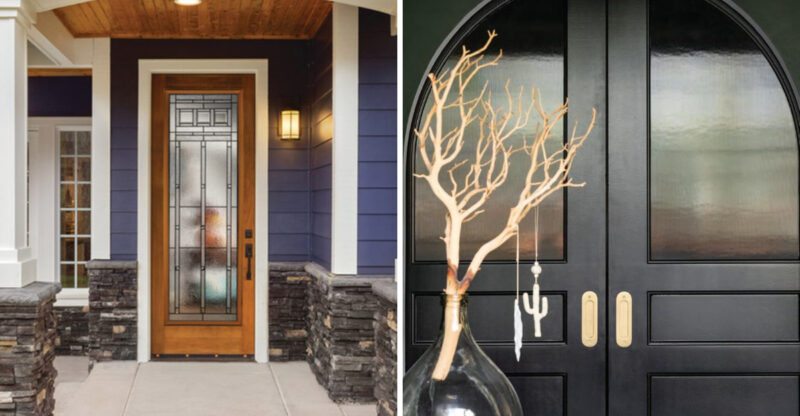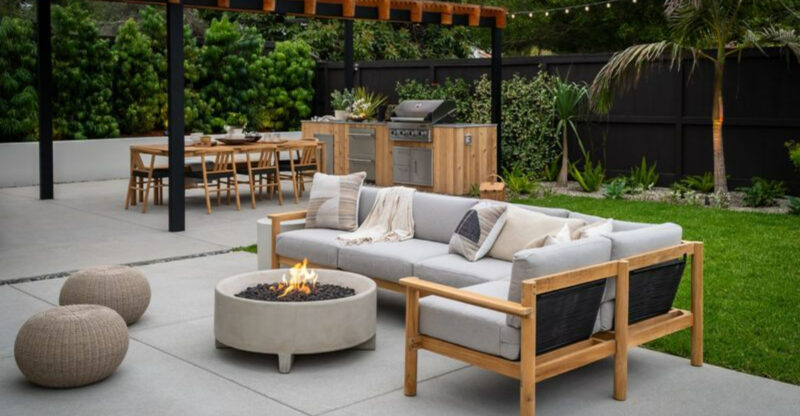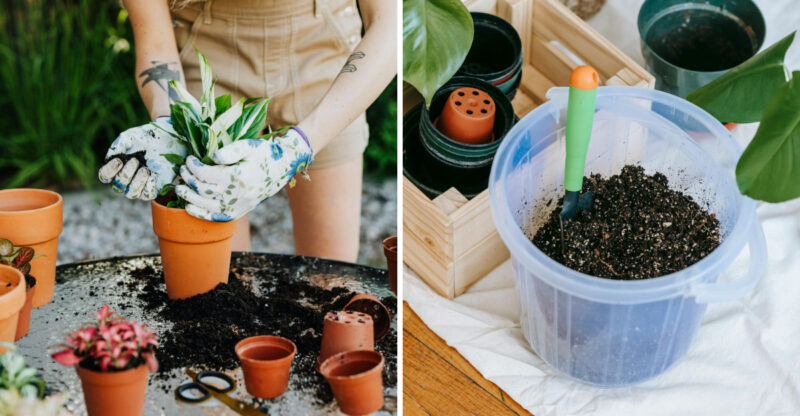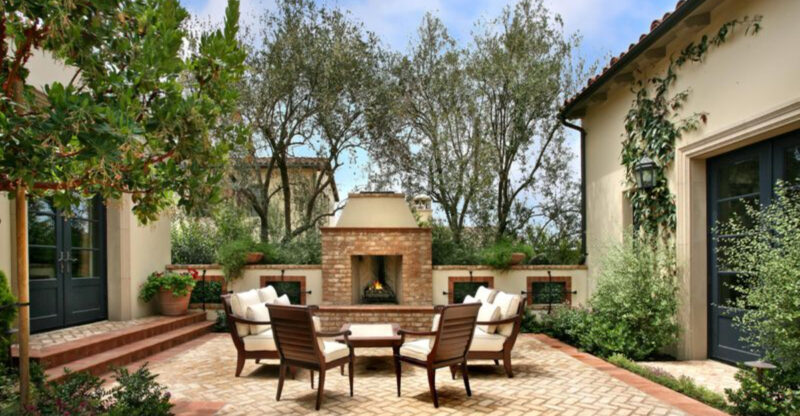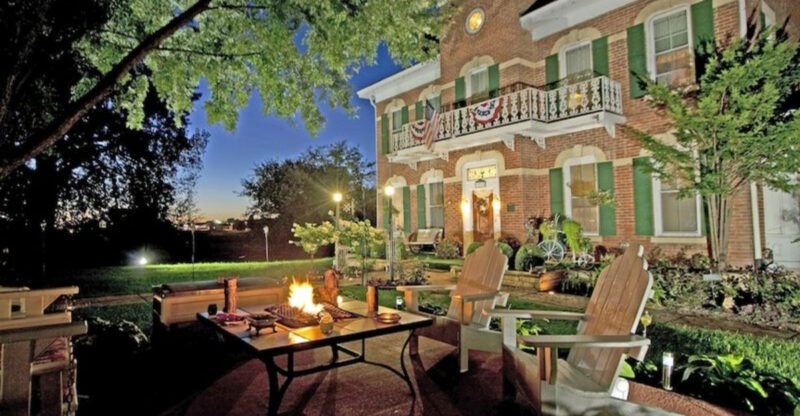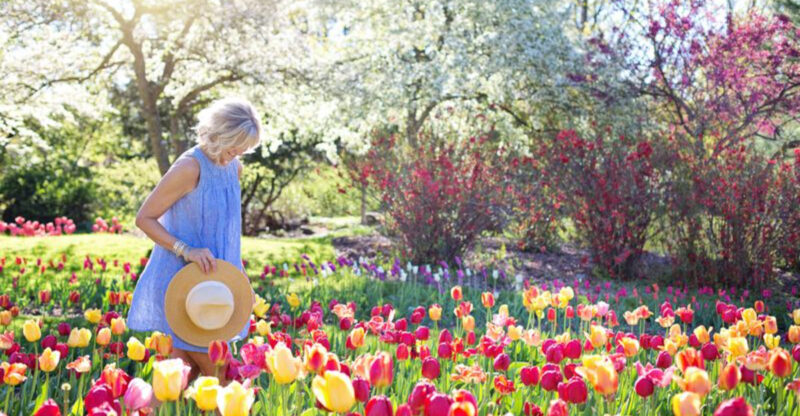Phoenix Know-How 10 Creative Outdoor Designs For Thriving In The Desert
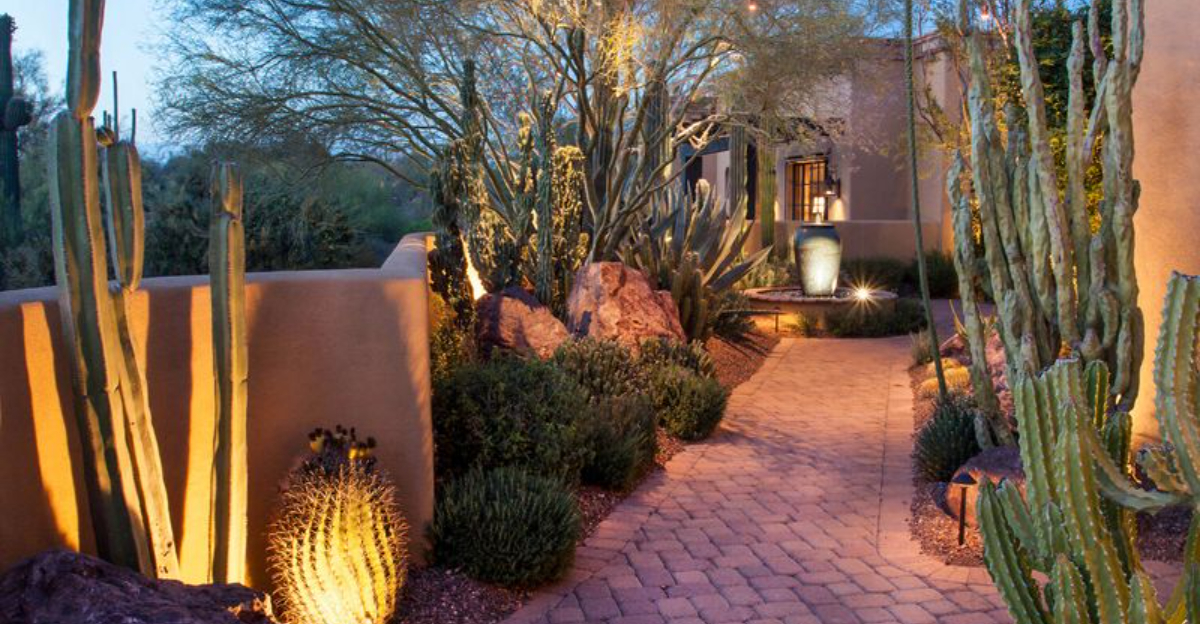
Living in the Phoenix desert doesn’t mean sacrificing beautiful outdoor spaces. The harsh sun and limited water actually inspire some of the most innovative landscape designs you’ll find anywhere.
With temperatures regularly soaring past 100°F, creating functional outdoor areas requires special know-how and desert-smart strategies.
These ten creative designs will help you transform your yard into a desert oasis that’s both stunning and sustainable.
1. Xeriscape Landscaping with Native Plants
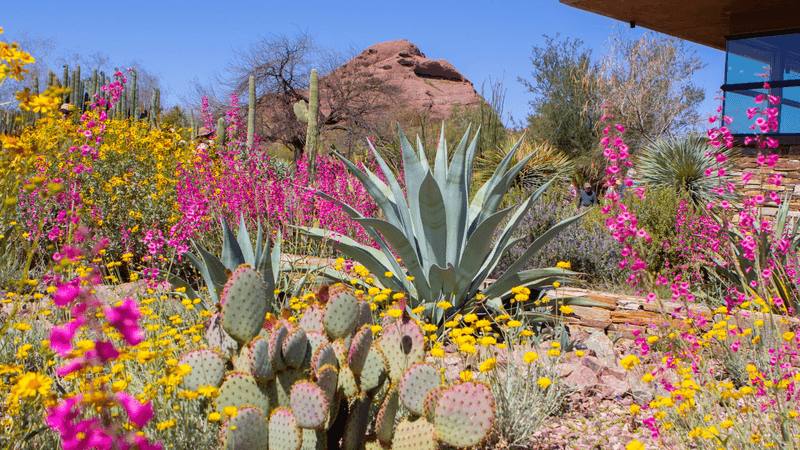
Desert natives like palo verde trees, desert marigold, and brittlebush create stunning landscapes while sipping minimal water. These plants evolved in our harsh conditions, so they’ll thrive without constant attention.
I’ve found grouping plants with similar water needs makes maintenance easier. Your yard becomes a tapestry of textures with spiky agaves nestled against flowing grasses and colorful wildflowers.
The best part? Native plants attract local wildlife hummingbirds, butterflies, and beneficial insects that bring your garden to life. With proper planning, your xeriscape can showcase year-round color while cutting water bills by up to 75% compared to traditional lawns.
2. Shaded Pergola Lounges
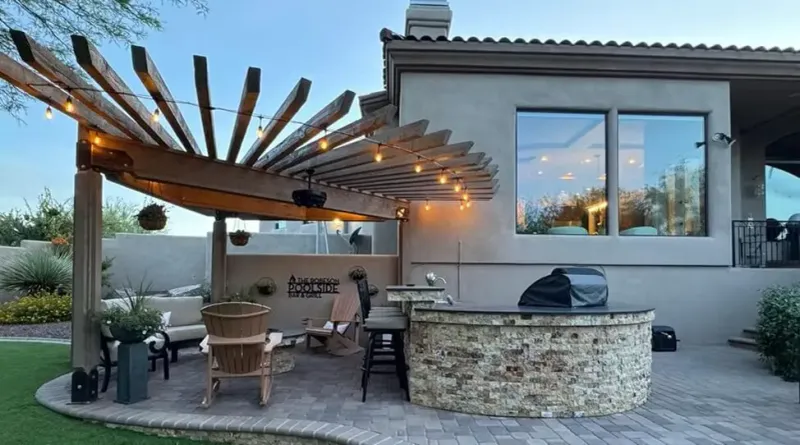
When summer hits Phoenix, shade becomes your most precious commodity. A well-designed pergola creates an outdoor room where you can actually enjoy those blazing afternoons without melting.
Wooden pergolas look fantastic, but metal frames often last longer in our intense sun. For maximum cooling power, I recommend adding shade cloth, desert vines like queen’s wreath, or retractable canvas covers.
My neighbors transformed their unused patio with a simple aluminum pergola, outdoor furniture, and string lights. Now they host evening gatherings even in July! The temperature difference under a properly designed shade structure can be 15-20 degrees cooler than exposed areas – making outdoor living possible year-round.
3. Desert-Friendly Succulent Gardens
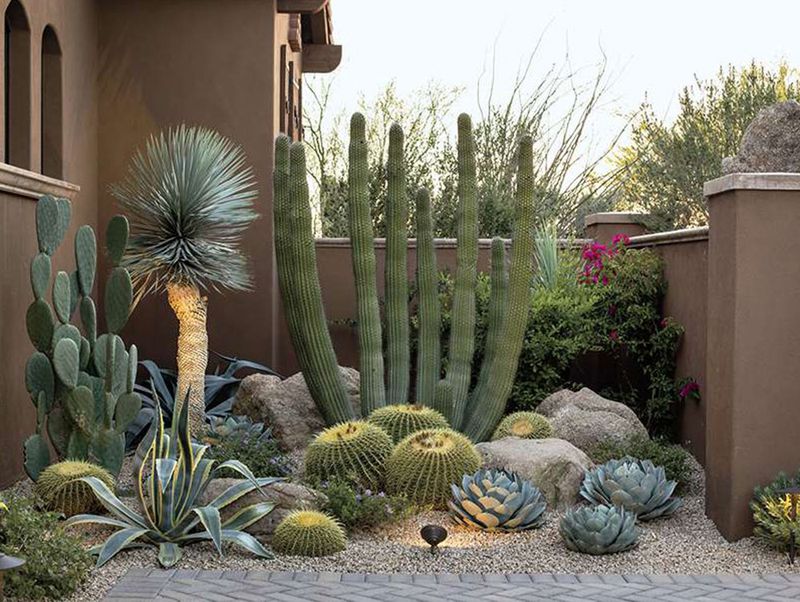
Succulents offer incredible variety without demanding gallons of precious water. Their fleshy leaves store moisture, making them perfect desert companions that practically thrive on neglect.
If you’re just starting out, try arranging different sizes, colors and textures in containers. Echeverias, haworthias, and sedums create living sculptures that change throughout the seasons. For ground plantings, agaves and larger aloes make dramatic statements.
Did you know many succulents produce spectacular flowers? My jade plant surprises me each spring with clusters of star-shaped blooms. Group your succulents in odd numbers and use decorative rock mulch to complete the look. With minimal irrigation, these plants will reward you with years of low-maintenance beauty.
4. Cool-Toned Concrete Patios
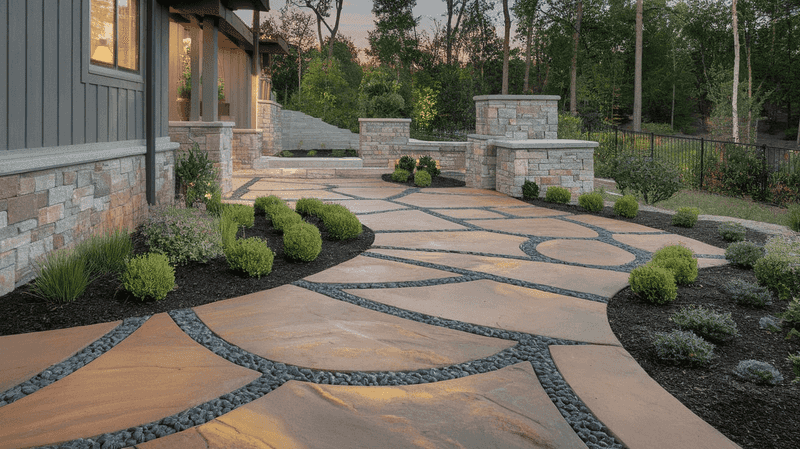
Dark surfaces absorb heat like crazy in our desert climate. Light-colored concrete patios reflect sunlight and stay significantly cooler underfoot – sometimes making the difference between usable and unbearable outdoor space.
Modern techniques go beyond plain gray slabs. Stamped patterns mimic flagstone or tile while cool-toned stains in soft tans, whites, and blues create beautiful surfaces that won’t burn bare feet. Adding polymers to the concrete mix increases durability in our extreme temperature swings.
My family added a light sandstone-colored patio last year with a subtle leaf pattern stamped throughout. Even on 110° days, we can walk on it comfortably! For existing dark patios, reflective coatings can reduce surface temperatures by up to 50 degrees compared to traditional concrete.
5. Outdoor Misting Systems
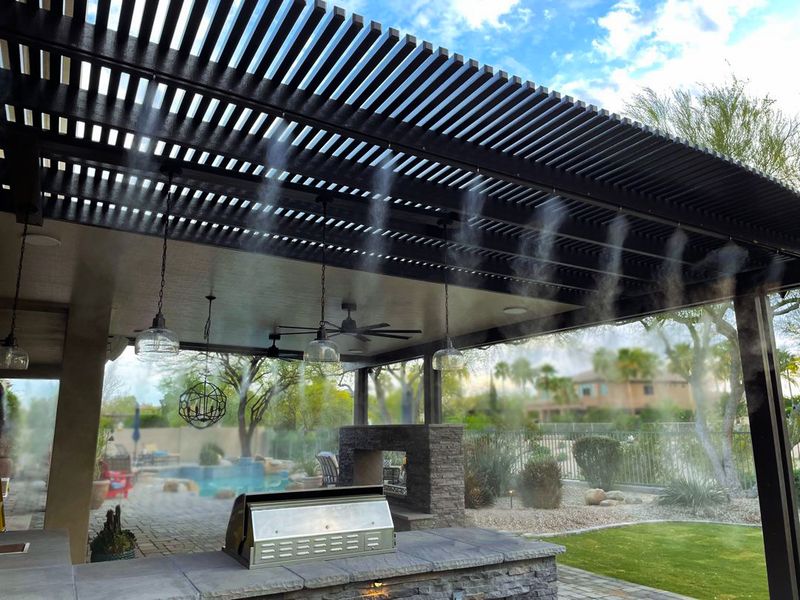
Misting systems can lower the surrounding temperature by 20-30 degrees through evaporative cooling. The tiny water droplets flash-evaporate in our dry air, creating a refreshing microclimate that makes summer gatherings possible.
High-pressure systems produce the finest mist and use surprisingly little water. I installed a system along my patio perimeter with programmable timers that activate during the hottest parts of the day. The difference is remarkable – like having air conditioning outdoors!
Where to place misters? Focus on areas where people gather – dining spaces, conversation areas, and play zones. Quality nozzles prevent dripping and clogging from our hard water. For entertaining spaces, consider adding portable misting fans that can be positioned exactly where needed for maximum comfort during those triple-digit days.
6. Saltillo Tile Courtyards

Saltillo tiles bring warm, earthy Southwest charm while staying surprisingly cool underfoot. The natural clay composition and traditional firing methods create tiles that don’t absorb heat like modern materials.
Though initially porous, proper sealing protects them from stains while preserving their natural cooling properties. I love how the terracotta tones complement desert plants and capture the essence of our regional architecture.
Are these tiles practical? Absolutely! My courtyard stays comfortable even during afternoon sun. The slight texture provides slip resistance around pool areas too. For an authentic look, mix tiles with slight color variations and traditional patterns. This centuries-old material has survived in desert regions precisely because it works so well with the climate – beautiful, functional, and distinctly Southwestern.
7. Built-In Stucco Seating Benches
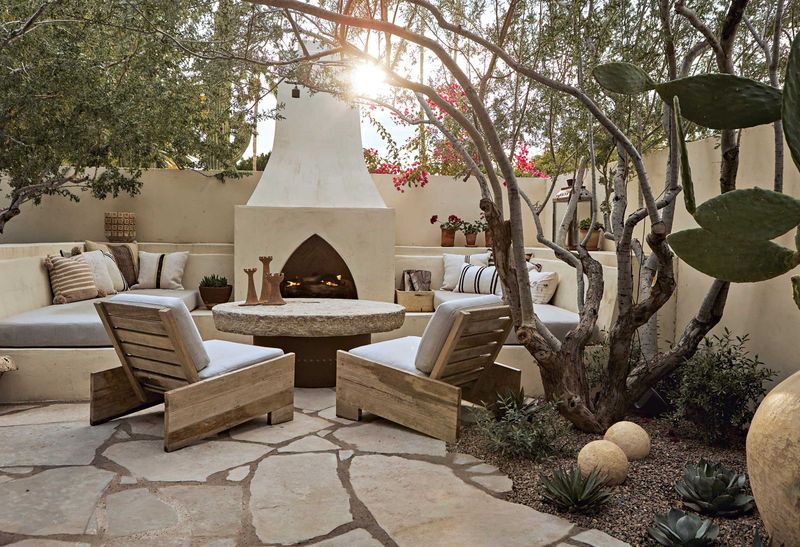
Stucco seating blends seamlessly with desert architecture while providing practical, permanent gathering spaces. These built-in benches stay remarkably cool compared to metal furniture that becomes untouchable by midday.
How practical are they? The thermal mass of stucco and concrete construction absorbs nighttime cool and releases it slowly during the day. My curved bench follows the edge of our patio, creating natural conversation areas without cluttering the space with movable furniture.
When designing yours, consider height (18 inches is ideal), width (minimum 18 inches for comfort), and back support angles. Add colorful cushions for comfort that can be stored during storms. The best part? These structures double as retaining walls or planters, maximizing space in small yards while creating that authentic Southwest courtyard feel that perfectly suits our desert environment.
8. Reflective Water Features

Water brings psychological cooling even when temperatures soar. Small-scale water features provide this benefit without wasting precious resources in our desert environment.
Modern designs focus on minimal surface area to reduce evaporation. My favorite is a simple basalt column fountain where water trickles down polished stone into a small basin, creating gentle sounds that mask traffic noise. The psychological cooling effect is remarkable!
Though conventional wisdom suggests avoiding water in the desert, thoughtfully designed features actually support wildlife while using less water than a small patch of lawn. Recirculating pumps, automatic refill valves, and evaporation reducers make maintenance simple. Even a small reflecting pool with floating ceramic balls creates movement and light play while minimizing water loss – proving desert living can include the sensory pleasure of water without waste.
9. Cacti-Filled Raised Planters
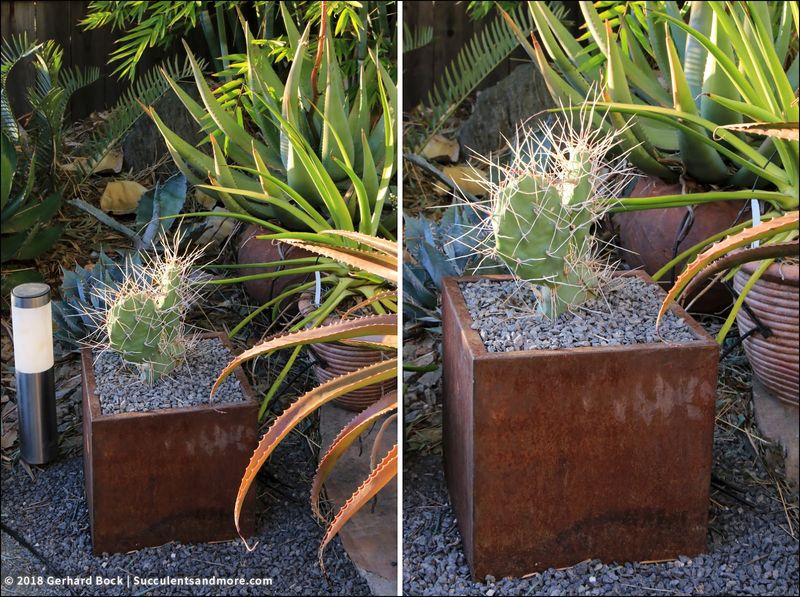
Raised planters showcase dramatic cacti collections while solving drainage problems common in our clay-heavy desert soils. The elevation creates visual interest and makes maintenance easier on your back!
Corten steel planters develop a gorgeous rusty patina that perfectly complements the blue-greens of agaves and the silvery spines of cacti. I built several at different heights to create a living sculpture garden visible from inside our home.
When designing yours, ensure excellent drainage with plenty of pumice or perlite mixed into cactus soil. Group specimens with similar water needs combine desert spoon, barrel cactus, and blue torch for dramatic contrasts. The vertical element these planters add makes even small spaces feel designed and intentional. Plus, raised beds keep pets and children safely away from spines while allowing these architectural plants to be appreciated up close.
10. Low-Voltage Landscape Lighting
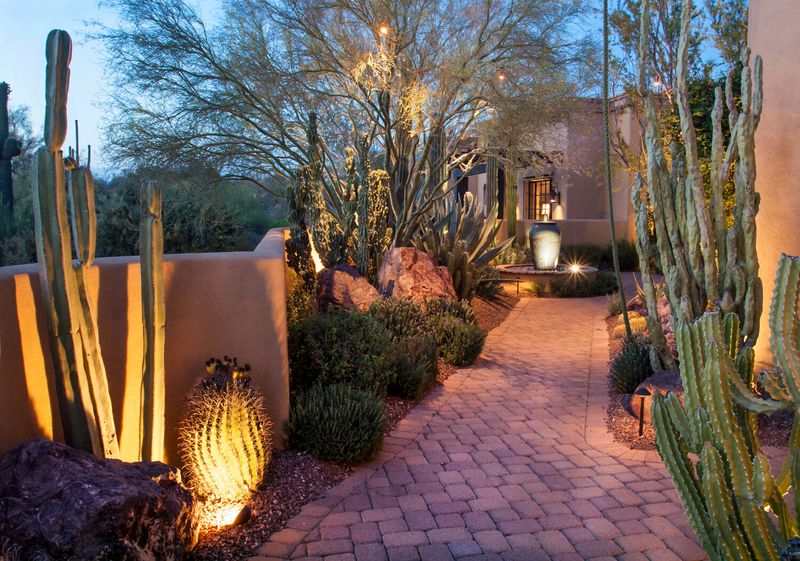
Desert evenings offer perfect outdoor temperatures, but only with proper lighting to extend your enjoyment after sunset. Low-voltage systems use minimal electricity while transforming ordinary landscapes into magical nighttime retreats.
Strategic uplighting on saguaros and palo verdes creates dramatic shadows against walls. Path lights guide movement through the garden while subtle wash lighting illuminates textured surfaces like stucco or stone.
My backyard came alive after installing simple copper fixtures that have weathered beautifully in our climate. The system runs on timers, automatically creating evening ambiance. Beyond aesthetics, good lighting enhances safety around steps and level changes. Today’s LED options consume tiny amounts of power while lasting for years in our harsh conditions. With solar options available too, desert-appropriate lighting lets you enjoy your outdoor spaces during the most comfortable hours without increasing your energy footprint.

